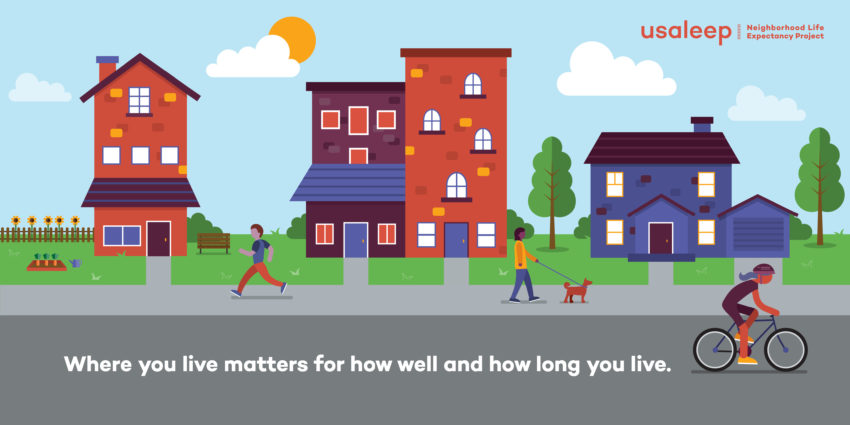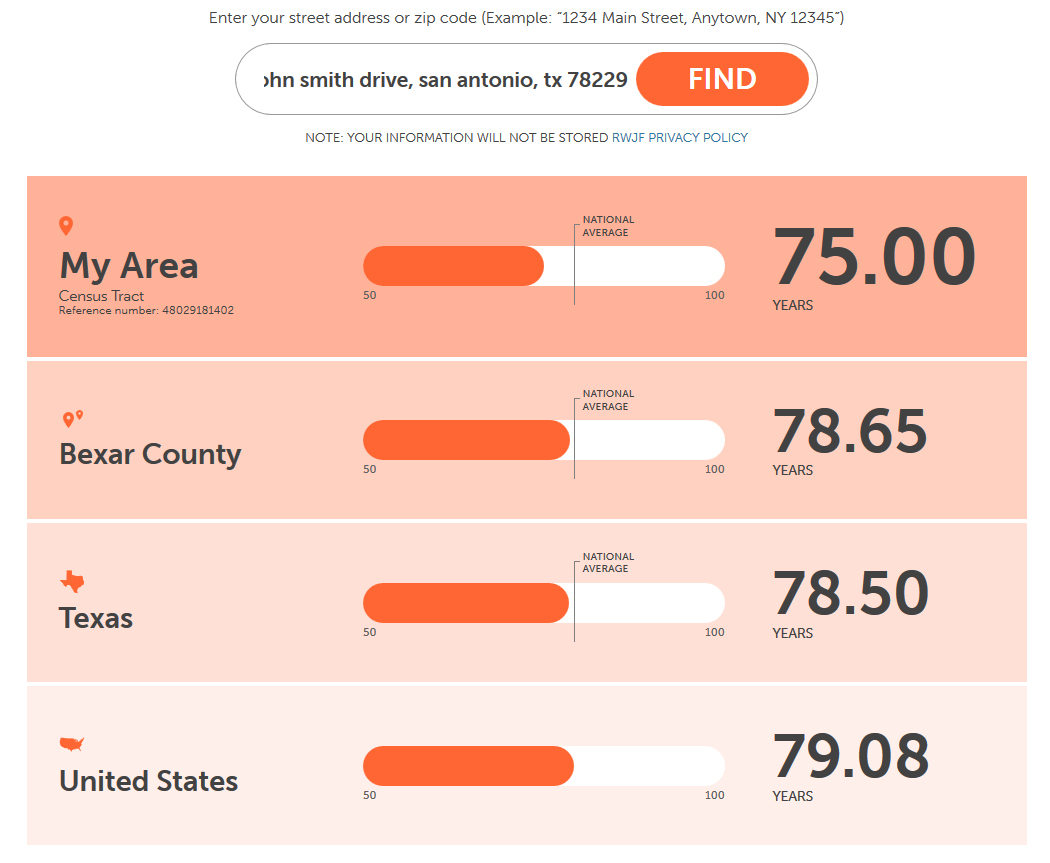
Share On Social!
These days, ZIP code isn’t only for your mail.
ZIP Code is a bigger predictor of our life expectancy than our genetic code.
For the first time in our country’s history, the U.S. is raising a generation of children who may live sicker and shorter lives than their parents, according to the Robert Wood Johnson Foundation.
But there’s good news.
For the first time ever, a census-tract-level data on life expectancy at birth has been released to help stimulate change.
The expectancy estimates—released by The United States Small-Area Life Expectancy Estimates Project (USALEEP), a joint effort of the National Association for Public Health Statistics and Information Systems, the Centers for Disease Control and Prevention’s National Center for Health Statistics, and the Robert Wood Johnson Foundation (RWJF)—shows how people living just a few neighborhoods apart may have vastly different opportunities for a long life.
“Everyone deserves a fair shot at living a long life, but as these data show, that isn’t happening,” said Oktawia Wojcik, an RWJF program officer. “These very localized data give us a more robust understanding of where there are disparities in life expectancy and the tangible things we can do to improve conditions in neighborhoods to enable people to live longer.”
ZIP Codes & Life Expectancy
In the United States, residents in many cities and counties have significant gaps in life expectancy.
Social researchers have long insisted that ZIP codes tell a far more informative story than our genetic code, and it’s true: ZIP code greatly influences educational attainment, income, and physical and mental health.
For example, in New Orleans the average life expectancy for babies born to mothers in different neighborhoods can vary by as much as 25 years. Furthermore, babies in Maryland’s Montgomery County can expect to live 6 to 7 years longer than babies born to mothers just a subway ride away in nearby Washington, D.C.
ZIP code has a greater impact than having adequate healthcare access.
Where we live determines our access to healthy food, as many Latino areas are surrounded by food swamps and food deserts. It also determines our access to transportation, affordable housing, places to play, early education, and more.
New, Interactive Tools & Resources
In a “culture of health,” everyone, regardless of ZIP code, has the right and opportunity to live their healthiest life possible.

Fortunately, the USALEEP’s new tools and resources can help you work with others in your community to help provide opportunities so that everyone has the ability to live a long, healthy life.
And here are 4 big ways to use the data you find:
- Policymakers. Use these data to better understand disparities and make important decisions about public transportation and grocery stores, requirements for physical activity and healthy foods in schools, community safety, access to health care, and much more.
- Public Health or Health Care Workers. Use these data to better inform your community health assessments, which will help you direct limited dollars to the areas most in need.
- Community Development Officials. Use these data to help decide which neighborhoods most need investment dollars to fund health clinics, schools, preschools, community centers, and other projects that can help improve health.
- Community Members. Use these data to guide conversations about what might be causing life expectancy disparities. Once you understand the root issues, you can talk with each other and your elected officials about what changes you want to see where you live—maybe better public transportation, increased access to healthy food, and affordable housing, or more education and job training opportunities for the neighborhood.
Also, register now for an awesome webinar on Oct. 16, 2018, to learn how to use these new life expectancy estimates.
By The Numbers
25.1
percent
of Latinos remain without health insurance coverage



